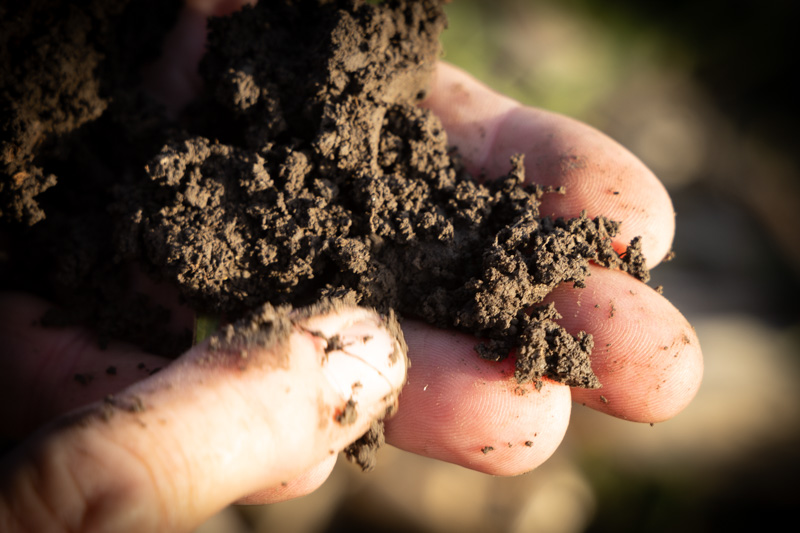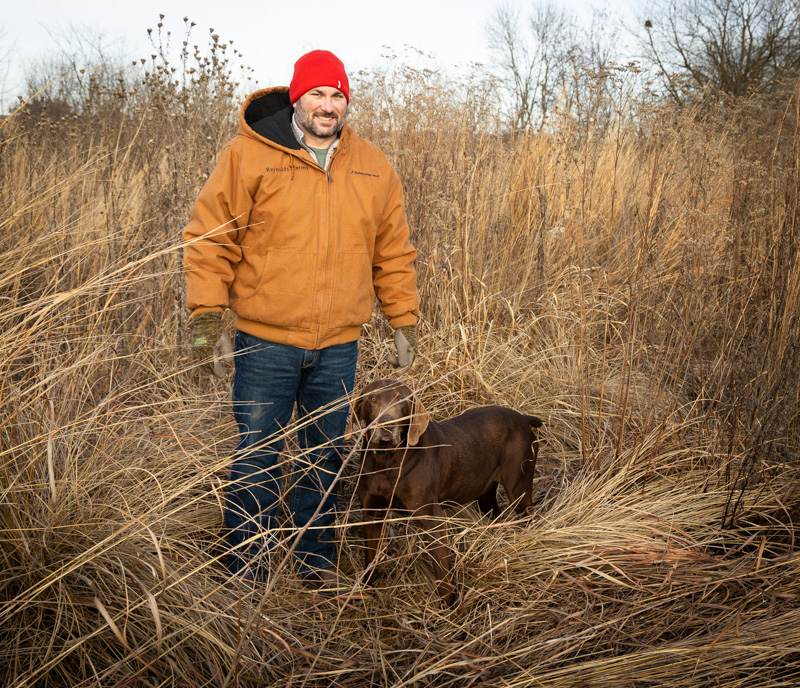Kris Reynolds has added cover crops and conservation practices to his farm near Nokomis in Montgomery County. Reynolds serves as a member of the STAR board and is Midwest Director of American Farmland Trust.
Watch videos | Steve Stierwalt | Joe Rothermel | Kris Reynolds
On-farm conservation practices in Illinois have largely focused on nutrient runoff in recent years, but some farmers are finding benefits beyond the goals of the Illinois Nutrient Loss Reduction Strategy.
Kris Reynolds, for example, grows corn and soybeans in Montgomery County (and also serves as Midwest Regional Director of American Farmland Trust). He foresees new opportunities in business and pleasure in addition to the soil and water-quality benefits of no-till and cover crops.
On the business side, Reynolds said he always gets his seed from local cover crop dealers and growers.
“Few farmers are growing rye locally,” he said. “This past year our county SWCD board chairman grew rye for seed for his farm and sold the excess to local farmers. Buying locally grown seed means a better carbon footprint – and it costs less for me. To meet increased use of cover crops, we’ll need more farmers to do this.”
On the pleasure side, Reynolds notes that deer love radishes.
“I’m big on the wildlife components of these practices,” he said. “I’m a hunter and conservationist and have found that cover crops are good for wildlife habitat.” Gamebirds are among the wildlife that benefit from clean waterways and increased year-round cover. Reynolds adds that radishes are among the treats in mixes of cover crops that may attract foraging wildlife.

But the core of conservation farming in Illinois is still the clean water and healthy soil that drew together Steve Stierwalt and Joe Rothermel in 2017 to plant the seeds that grew into Illinois STAR. Their farm philosophies haven’t changed, but they’ve added several seasons of experience and experiments and have seen their vision for Champaign County blossom into a national initiative.
Stierwalt turned over the day-to-day reins of the family’s 2,000 acres to his son in 2016, when he began serving four years as president of the Illinois Association of Soil & Water Conservation Districts. “He brought a lot of new ideas into the operation when I moved up the transition of the farm to him,” he said. “That was a good decision for the farm: His planning vision for the farm is much longer term than mine.”
Stierwalt started in the mid-90s growing no-till soybeans, then no-till corn. After a few years, he started “playing around with strip till.” He later learned from Rothermel the “fine points of cover crops, how to integrate them effectively and economically.” All along, he has used cereal rye ahead of soybeans. “The biggest thing is to determine how to plant into rye that’s still green. Many farmers, if they have a bad experience a year or two, get away from” cover crops. Stierwalt keeps experimenting. Cereal rye, he said, is good at sequestering nitrogen, but doesn’t get back into the system again quick enough. But he’s settling in on winter barley, which “seems to have the right characteristics.”
Rothermel has about 80 percent of his 1,100 acres enrolled in STAR, and is in the enrollment process with the remainder of newly added acreage. He raises corn, soybeans, and winter wheat.
“When I returned to farm, my dad already was doing no-till,” he said. “Then I started learning, going to meetings, and started to strip till. Around 2010, I experimented with cover crops.” He sometimes used wheat as a cover crop. Rothermel usually has 600 to 700 acres in cover crops, and is settling on cereal rye after corn and before beans; and oats and clover after beans and before corn. “But it still feels like an experiment,” he said.
Cover crops reduce wind and water erosion. “You don’t see dust coming off fields with two feet of cereal rye,” Rothermel said. “Reducing soil erosion is the best reason to start cover cropping.”
For Reynolds, cover cropping began with cereal rye in 2013: “It works great ahead of soybeans. Oats and radishes have worked well in the past ahead of corn,” he said. He used to terminate rye early, but this year planted soybeans around April 10 – into a 3- to 4-inch stand of rye. “If I let it grow, I get more above-ground biomass, increased water infiltration, and better weed suppression. Those are usually my best beans.” He terminated the rye in mid-May this year, noting that once you terminate a cover crop, it will not compete for soil moisture with the cash crop. That was an benefit in the dry spring, but “in most years it’s an advantage having that cover crop take up excess soil moisture so the fields dry out ahead of planting.
“There are so many things we can’t control as farmers,” Stierwalt said. “We can’t control weather, prices, or policies – but the one thing we can control is our practices. Anytime someone asks us to change our practices, we get protective because it adds risk to the process. We have to find enough conservation drivers – incentives – and work with landowners to ask farmers for conservation practices. I think farmers have to want to do it. They have to see the value.”
On the surface, he said, there may seem to be a lot of reasons not to change practices, “but really, there’s no excuse because the practices work.”
How do we convince the skeptics?
“A lot more STAR signs are going up. I think that’s good,” Rothermel said. “It helps farmers with their visibility, with what their farming practices are. Other farmers can see what these farmers are doing. Let people know what your farm philosophy is.”
Stierwalt’s philosophy is that, “If you have something that people think is important, they will come – If it strikes a chord with them. I’m looked at as an early adopter – I wanted to do it. But there’s a lot of middle adopters, those are the ones who can be influential with the others.”
Jed Siedentop, for example. He farms 900 acres near Herscher in Kankakee County, is a middle adopter and a former skeptic – or someone who did not have STAR on his radar until a soil and water conservation district employee brought it to his attention a couple years ago. Until then, he was not focused on conservation practices. Now, with three of his fields enrolled in STAR, he’s making up for lost time.
“We constructed a grass waterway to assist with drainage, reduce nutrient runoff, and soil erosion,” he said. “Also, I have been planting a cover crop ahead of the soybeans and have gone to a single shallow tillage pass before the corn is planted. I used the Partners for Conservation cost-share program to help me get some experience with cover crops. I’m still not where I’d like to be, but the key is to make small steps toward a more sustainable way of farming.”
So far, he’s maintaining his yields while doing so.
“We just had a very dry growing season. And despite some concerns that the cover crops might have used up some of the moisture, the soybean yields were the best that I’ve seen on these farms.”
Need ideas on how to start implementing cover crops? Visit Illinois STAR and check resources at the Illinois Sustainable Ag Partnership.
ISAP cover crop dealer directory
ISAP cover crop incentive directory

Story by Brian Williams— a freelance writer, consultant, and “Dot Connector” who contributes to AIM Illinois through his association with HNA Networks.
Photos and video by Steve Warmowski— communications coordinator for the Agroecology + Innovation Matters initiative after a photojournalism career at newspapers in Illinois and Michigan.
Get stories like this in your mailbox by subscribing to the AIM newsletter.

